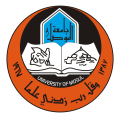MOSUL TIME RADIO
The Police Directorate for Antiquities and Heritage Protection in Babil governorate announced the discovery of 47 ancient artifacts.
According to a statement, a joint team from the Antiquities and Heritage Department and the Antiquities and Heritage Inspection inspected the archaeological sites in the governorate, including the Borsippa site.
The directorate confirmed the discovery of diverse ancient artifacts, including metal pieces, various coins, beads, a medium-sized clay jar, a small-sized jar, and others, all dating back to ancient historical eras.
According to UNESCO, Babil or Babylon is an archaeological site that stands out as a unique testimony to one of the most influential empires of the ancient world. One of the largest, oldest settlements in Mesopotamia and the Middle East, it was the seat of successive powerful empires under such famous rulers as Hammurabi and Nebuchadnezzar.
“As an archaeological site, Babylon possesses exceptional cultural and symbolic associations of universal value. The property represents the tangible remains of a multifaceted myth that has functioned as a model, parable, scapegoat and symbol for over two thousand years.”
Babylon figures in the religious texts and traditions of the three Abrahamic faiths and has consistently inspired literary, philosophical, and artistic works. The buildings and other urban features contained within the boundaries of the property (outer and inner-city walls, gates, palaces, temples including the ziggurat, the probable inspiration for the Tower of Babil, etc.) include all its attributes as a unique testimony to the neo-Babylonian civilization, in particular its contribution to architecture and urban design.
UNESCO revealed that 85% of the property remains unexcavated and is of primary importance in supporting the site’s Outstanding Universal Value through further conservation and research.





